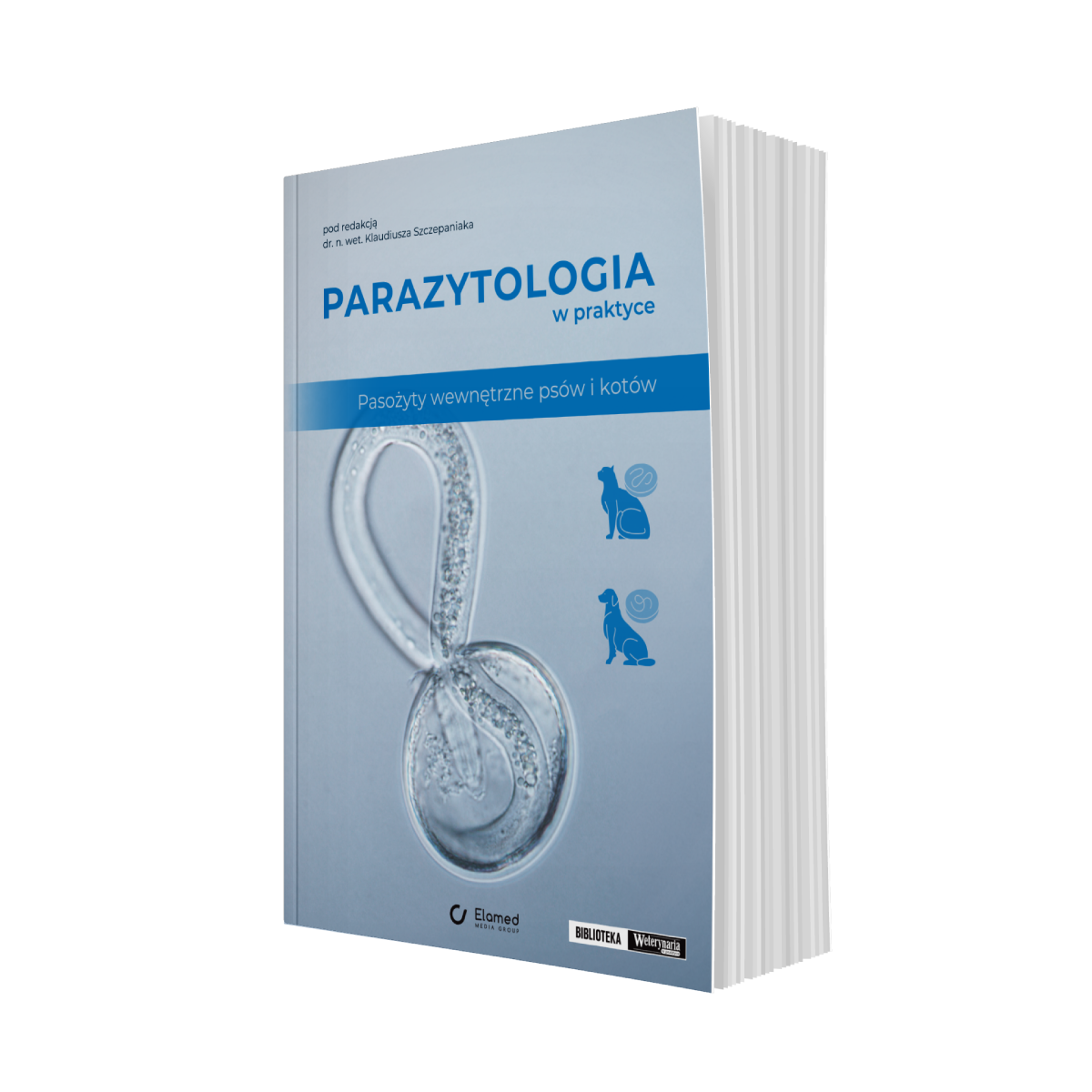art. sponsorowany
prof. dr hab. Łukasz Adaszek
Zastosowanie karmy Hepatic® (Royal Canin) u psów z upośledzoną czynnością wątroby w przebiegu babeszjozy
Piśmiennictwo
- Adaszek Ł., Winiarczyk S.: Dogs babesiosis still actually problem. Wiad. Parazytol. 2008, 54, 109–115.
- Adaszek Ł., Winiarczyk S., Górna M.: From piroplasmosis to babesiosis problems with classification of Babesia protozoa isolated from dogs. Wiad. Parazytol. 2010, 56, 111-115.
- Camacho A.T., Pallas E., Gestal J.J., Guitiàn F.J., Olmeda A.S., Goethert H.K., Telford S.R.: Infection of dogs in north-west Spain with a Babesia microti-like agent. Vet. Rec. 2001, 149, 552-555.
- Conrad P., Thomford J., Yamane I., Whiting J., Bosma L., Uno T., Holshuh H.J., Shelley S.: Hemolytic anemia caused by Babesia gibsoni infections in dogs. J. Am. Vet. Med. Assoc. 1991, 199, 601-605.
- Kjemtrup A.M., Wainwright K., Miller M., Penzhorn B.L., Carreno R.A.: Babesia conradae, sp. nov. a small canine Babesia identified in California. Vet. Parasitol. 2006, 138, 103-111.
- Carret C., Walas F., Carcy B., Grande N., Précigout E., Moubri K., Schetters T.P., Gorenflot A.: Babesia canis canis, Babesia canis vogeli, Babesia canis rossi: differentiation of the three subspecies by a restriction fragment length polymorphism analysis on amplified small subunit ribosomal RNA genes. J. Eukaryot. Microbiol. 1999, 46, 298-303.
- Costa-Júnior L.M., Ribeiro M.F., Rembeck K., Rabelo E.M., Zahler-Rinder M., Hirzmann J., Pfister K., Passos L.M.: Canine babesiosis caused by Babesia canis vogeli in rural areas of the State of Minas Gerais, Brazil and factors associated with its seroprevalence. Res. Vet. Sci. 2009, 86, 257-260.
- Duarte S.C., Linhares G.F., Romanowsky T.N., da Silveira Neto O.J., Borges L.M.: Assessment of primers designed for the subspecies-specific discrimination among Babesia canis canis, Babesia canis vogeli and Babesia canis rossi by PCR assay. Vet. Parasitol. 2008, 152, 16-20.
- Irwin P.J.: Canine babesiosis: from molecular taxonomy to control. Parasit. Vectors 2009, 26, S4.
- Zahler M., Schein E., Rinder H., Gothe, R..: Characteristic genotypes discriminate between Babesia canis isolates of differing vector specificity and pathogenicity in dogs. Parasitol. Res. 1998, 84, 544-548.
- Zygner W., Górski P., Wędrychowicz H.: New localities of Dermacentor reticulatus tick (vector of Babesia canis canis) in central and eastern Poland. Pol. J. Vet. Sci. 2009, 12, 549-555.
- Zygner W., Jaros S., Wędrychowicz H.: Prevalence of Babesia canis, Borrelia afzelii, and Anaplasma phagocytophilum infection in hard ticks removed from dogs in Warsaw (central Poland).Vet. Parasitol. 2008, 153, 139-142.
- Welc-Falęciak R., Rodo A., Siński E., Bajer A.: Babesia canis and other tick-borne infections in dogs in Central Poland. Vet. Parasitol. 2009, 166, 191-198.
- Adaszek Ł., Winiarczyk S.: Molecular characterization of Babesia canis canis isolates from naturally infected dogs in Poland. Vet. Parasitol. 2008, 152, 235-241.
- Adaszek Ł., Winiarczyk S.: Application of the SYBR Green real-time HRM PCR technique in the differentiation of the Babesia canis canis protozoa isolated in the areas of eastern Poland. Parasitol. Res. 2010, 106, 1253-1256.
- Adaszek Ł., Martinez A.C., Winiarczyk S.: The factors affecting the distribution of babesiosis in dogs in Poland. Vet. Parasitol. 2011, 181, 160-165.
- Lobetti R.: The pathophysiology of renal and cardiac changes in canine babesiosis. Lambert Academic Publishing AG. Saarbrucken 2010.
- Kujovich J.L.: Hemostatic defects in end stage liver disease. Crit. Care Clin. 2005, 21, 563-587.
- Adaszek Ł., Listos P., Górna M., Ziętek J, Capiga D.: Ostry przebieg babeszjozy u psa z mechaniczną żółtaczką. Życie Wet. 2009, 84, 227-230.
- Máthé A, Vörös K, Papp L, Reiczigel J.: Clinical manifestations of canine babesiosis in Hungary (63 cases). Acta Vet Hung. 2006, 54, 367-385.
- Sarma K., Mondal D.B., Saravanan M.: Ultrasonographic changes in dogs naturally infected with tick borne intracellular diseases J. Parasit. Dis. 2016, 40, 248-251.
- Fraga E., Barreiro J.D, Goicoa A., Espino L., Fraga G., Barreiro A.: Abdominal ultrasonographic findings in dogs naturally infected with babesiosis. Vet. Radiol. Ultrasound. 2011, 52, 323-329.
- Máthé A., Vörös K., Németh T., Biksi I., Hetyey C., Manczur F., Tekes L.: Clinicopathological changes and effect of imidocarb therapy in dogs experimentally infected with Babesia canis. Acta Vet. Hung. 2006, 54, 19-33.
prof. dr hab. Łukasz Adaszek
Katedra Epizootiologii i Klinika Chorób Zakaźnych
Wydział Medycyny Weterynaryjnej
Uniwersytet Przyrodniczy w Lublinie
ul. Głęboka 30, 20-612 Lublin
Mogą zainteresować Cię również
107
ALGORYTMY
POSTĘPOWANIA
w weterynarii
POSTĘPOWANIA
w weterynarii
























